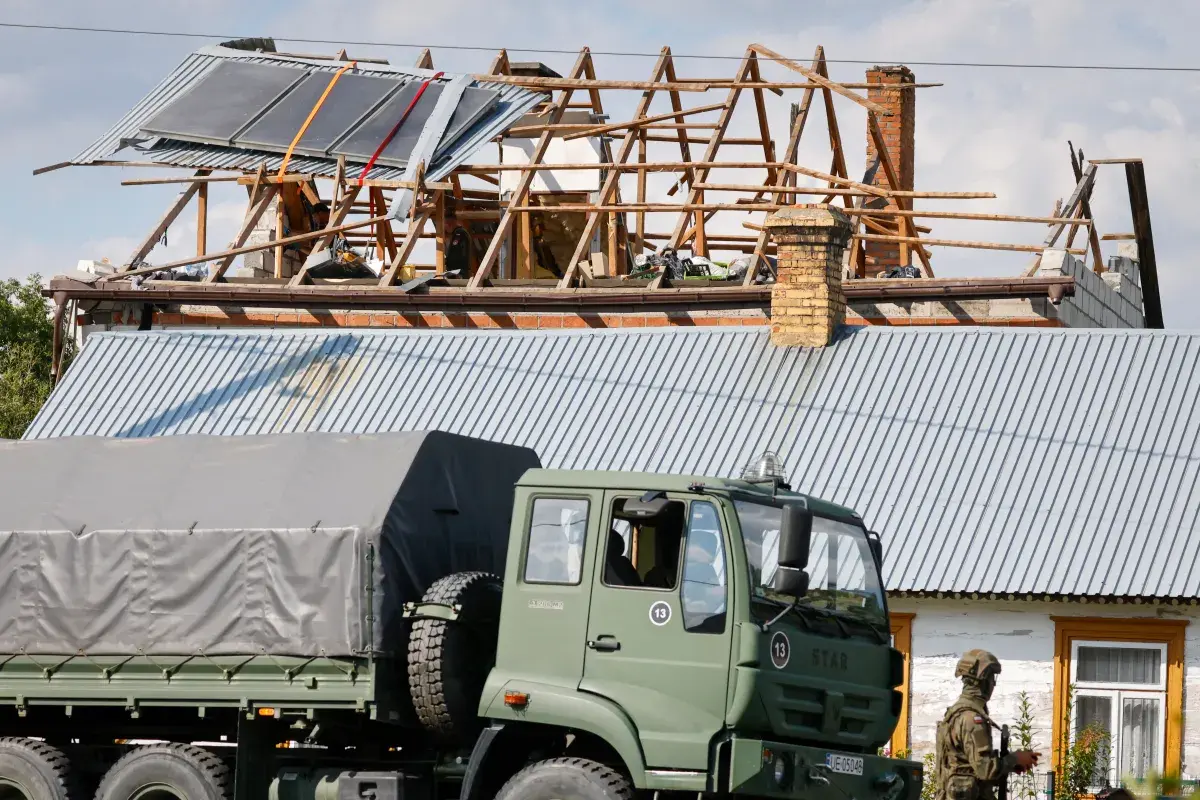
Detection capabilities with radars and acoustic sensors must be part of plans for a “drone wall” in Eastern Europe to thwart the threat posed by Russia, the EU’s defense commissioner has said.
Andrius Kubilius warned that Russia “is testing EU and NATO” following reports of airspace violations by Moscow’s drones in Estonia, Poland, Romania and Denmark, as he described the challenge of a defensive system that works at long distances.
Karl Rosander, CEO of Nordic Air Defence, a technology developer, told Newsweek that an EU drone wall would be a coordinated, multilayered network designed to detect, track, and intercept unauthorized drones.
Why It Matters
Russian drone incursions across EU and NATO airspace have focused European leaders on how to defend against the growing hybrid threat posed by Moscow which is accused of testing the alliance’s resolve.
The EU is moving forward with a drone wall as part of an initiative called Eastern Flank Watch and while it has not revealed further details, there will need to be agreement among member states over its funding and its technical specifications.
What To Know
The European Commission, the executive branch of the EU, announced Friday its commitment to building a drone wall to protect Europe against Russia, after airspace violations by drones which it accuses Moscow of launching.
EU defense commissioner Kubilius said that Europe needed to develop better capabilities to tackle drones but admitted a drone shield could take a year to build.
He said that priorities for the project would include boosting detection capabilities such as radars, acoustic sensors and other equipment which would need to detect all drones, including smaller aircraft flying at low altitudes.
Rosander told Newsweek Saturday that a network of sensors would be deployed across the border to spot incoming drones, which could be a multifaceted detection system including radars, infrared cameras as well as acoustic and radio frequency sensors.
Once a drone is detected and tracked, the system would need to deploy various “effectors” to neutralize the threat and these capabilities are expected to be modular and scalable, Rosander said.
Public spaces against drones need a more sophisticated solution than just ‘shooting them down’ and using missiles and ballistics to take them out in proximity to fuel tanks, roads and houses only heightens risk, he added.
“Kinetic interception physically takes out the drones in a safer way,” Rosander said, “the force of the interceptor missile physically disables the drone, knocking it out of the sky. Other alternatives at their disposal could include deploying nets.”
Over the last month, drones have been detected in Polish, Romanian, Danish and Norwegian airspace.
Also, NATO dispatched fighter jets after three Russian MiG-31s aircraft loitered in Estonian airspace for 12 minutes although Moscow said they had remained in international airspace.
Meanwhile, Denmark and Norway have closed airports this week in response to drones in incidents in which the Kremlin has denied involvement.
This has shifted the debate about how to ensure air defenses, which had been built for missiles and manned aircraft, can deal with cheap disposable drones.
Siete Hamminga, CEO of Robin Radar, a Dutch radar firm, told Newsweek that the drone incursions that shut down Danish airports showed that civil aviation was a frontline target. “Europe must start treating its skies as contested airspace, even at home, and invest in the protection needed to keep them secure.”
What People Are Saying
Andrius Kubilius, EU defense commissioner said the EU: “needs to develop additional capabilities, which we perhaps lack at the moment.”
Karl Rosander, CEO of Nordic Air Defence: “It sounds drastic, but the idea of a drone wall makes perfect sense for how Europe should be protecting its borders. NATO needs a secure eastern frontline in the skies just as much as it does on the ground.”
What Happens Next
The drone wall will be discussed by EU leaders next week when they meet in Copenhagen. The European Commission is expected to come up with “a detailed technical road map” for the project which could be funded by the €150 billion loans-for-weapons SAFE scheme and the €1.5 billion European Defence Industry Program (EDIP).



